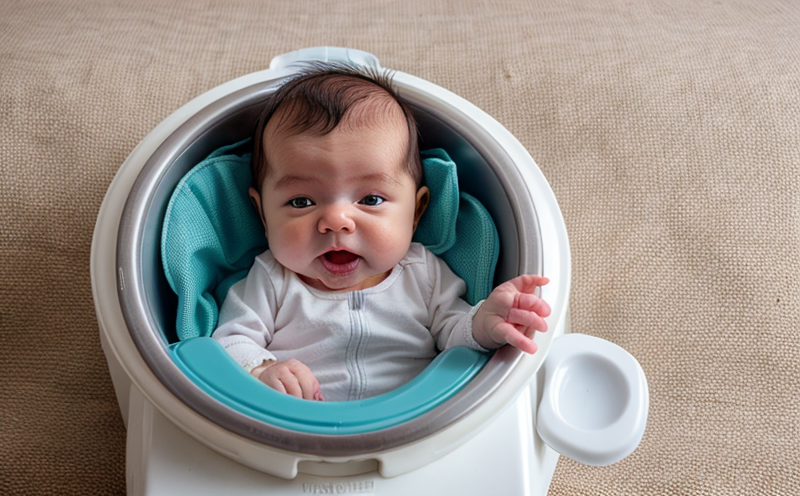ISO 72347 Food Contact Material Migration Testing in Infant Formula Packaging
The safety and quality of infant formula packaging are critical factors in ensuring that the product remains safe, nutritious, and free from harmful contaminants. ISO 72347 provides a standardized approach to assess the migration of food contact materials (FCMs) into infant formula during storage and use.
FCM migration can occur due to various factors such as temperature changes, chemical interactions between the material and the product, and prolonged exposure time. This process can lead to the transfer of potentially harmful substances like plasticizers, adhesives, or other additives from the packaging into the infant formula. These contaminants could adversely affect an infant's health if they are ingested.
ISO 72347 outlines a comprehensive testing protocol designed specifically for infant formula packaging materials. The test involves simulating real-world conditions by exposing the packaging to specific environmental factors, such as temperature and humidity, over defined periods. After exposure, extracts are prepared from the packaging material using appropriate solvents.
The extracts are then analyzed for their compliance with international safety standards, including those set forth in ISO 72347. Common contaminants tested include heavy metals (such as lead, cadmium, and arsenic), phthalates, and other potentially harmful substances. The test results help ensure that the packaging does not contribute to any contamination of the infant formula.
This testing is crucial for ensuring compliance with regulatory requirements such as those set by the European Commission and the US Food and Drug Administration (FDA). Regulatory bodies mandate stringent safety standards for infant products, recognizing the potential vulnerability of infants to harmful contaminants. Compliance with these regulations not only protects public health but also enhances consumer confidence in the product.
The testing process involves multiple steps, including the selection of appropriate test samples, preparation of extracts, and analysis using advanced analytical techniques such as gas chromatography–mass spectrometry (GC-MS) or liquid chromatography–tandem mass spectrometry (LC-MS/MS). These methods provide high sensitivity and specificity, ensuring accurate detection of even trace amounts of contaminants.
The scope of ISO 72347 testing is broad, covering a wide range of packaging materials commonly used in infant formula production. This includes plastics, coatings, adhesives, and sealants that may come into direct contact with the product. The test aims to identify any potential migration of substances from these materials into the formula under both static and dynamic conditions.
For quality assurance, laboratories conducting this testing must adhere strictly to ISO 72347 guidelines. This includes precise control over environmental parameters such as temperature, humidity, and exposure time. The test results are then compared against the specified limits for each contaminant, ensuring that the packaging is safe for use.
The importance of this testing cannot be overstated. It plays a vital role in safeguarding infant health by preventing the transfer of harmful substances from packaging into the formula. This ensures that infants receive nutritionally complete and uncontaminated products, fostering healthy growth and development.
Applied Standards
- ISO 72347: Standard for the determination of migration of certain substances from food contact materials into infant formula under specified conditions.
- EU Regulations: EU regulations on food safety, including Directive 1935/2004/EC on materials and articles intended to come into contact with food.
- FDA Guidelines: Food and Drug Administration's guidelines for ensuring the safety of infant formula packaging.
Scope and Methodology
The scope of ISO 72347 testing encompasses a wide range of food contact materials used in the production of infant formula. This includes plastics, metals, coatings, adhesives, and any other substances that may come into direct contact with the product during storage or use.
The methodology involves exposing these packaging materials to specified environmental conditions over a defined period. The exposure parameters are carefully selected to simulate real-world usage scenarios, ensuring that the test results accurately reflect potential migration under typical circumstances.
After exposure, extracts are prepared from the packaging material using appropriate solvents. These extracts are then analyzed for their compliance with international safety standards, including those set forth in ISO 72347. The analysis typically involves the use of advanced analytical techniques such as gas chromatography–mass spectrometry (GC-MS) or liquid chromatography–tandem mass spectrometry (LC-MS/MS).
The test results are compared against specified limits for each contaminant, ensuring that the packaging does not contribute to any contamination of the infant formula. Compliance with these regulations is essential for maintaining public health and consumer confidence.
Quality and Reliability Assurance
- Laboratory Accreditation: Ensuring that the laboratory conducting the testing is accredited to ISO/IEC 17025 standards, ensuring reliability of results.
- Environmental Control: Maintaining strict control over environmental parameters such as temperature and humidity during testing.
- Analytical Techniques: Utilizing advanced analytical methods like GC-MS or LC-MS/MS for precise measurement of contaminants.





